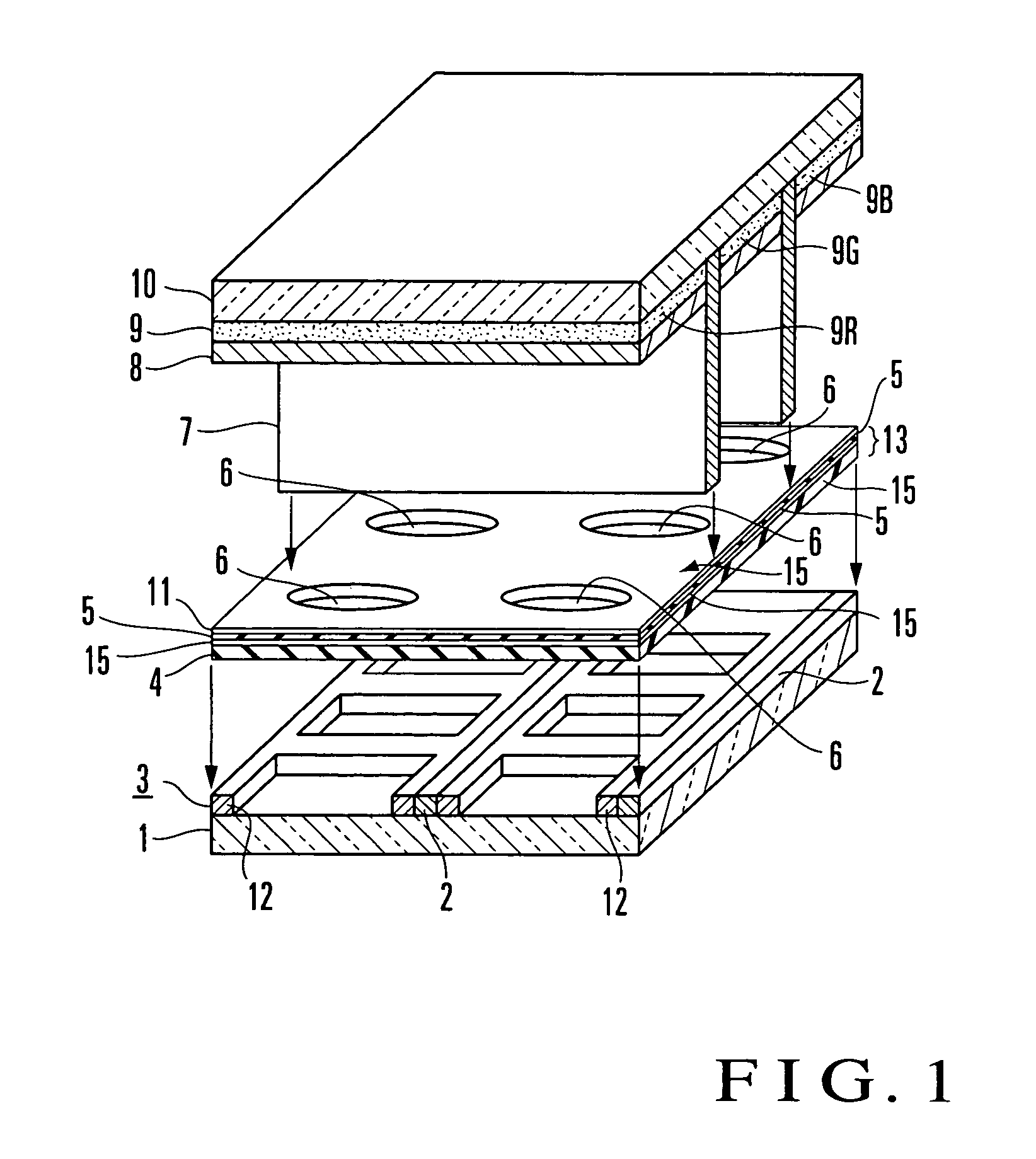Flat panel display and method of manufacturing the same
- Summary
- Abstract
- Description
- Claims
- Application Information
AI Technical Summary
Benefits of technology
Problems solved by technology
Method used
Image
Examples
first embodiment
[0049] As shown in FIG. 1, a flat panel display according to the first embodiment has a vacuum envelope with a front glass plate 10 which is at least partly transparent and a glass substrate 1 opposing the front glass plate 10 and having a substantially rectangular shape when seen from the top, and a cathode 3 formed on the glass substrate 1 and having electron-emitting sources in its predetermined region.
[0050] The flat panel display also has a gate electrode substrate 13 having electron-passing holes 6 and arranged in the envelope to oppose the glass substrate 1 to be separate from the cathode 3, and a phosphor screen 9 and anode electrode 8 which are formed on the surface of the front glass plate 10 in the vacuum envelope.
[0051] The cathode 3 has a plurality of band-like cathodes 12 which are arranged parallel to each other. The band-like cathodes 12 form electron-emitting sources 14. Substrate ribs 2 are arranged between the plurality of band-like cathodes 12.
[0052] The subst...
second embodiment
[0133] The second embodiment will be described with reference to the accompanying drawings.
[0134] A flat panel display according to the second embodiment is a flat panel display in which the structures of the gate electrode substrate and cathode are improved to improve the display uniformity. The flat panel display according to the second embodiment is constituted by a substrate, gate electrode substrates 11, front ribs 7, and a panel plate, as shown in FIG. 8.
[0135] The substrate will be described. The substrate is formed of a glass substrate 1 having a substantially rectangular shape when seen from the top, substrate ribs 2, and a cathode 3.
[0136] The cathode 3 is formed of cathode substrates 12 and electron-emitting sources 14. Each cathode substrate 12 is obtained by machining a substrate having a conductive surface, e.g., a metal member made of a 426-alloy and having a thickness of about 0.1 mm to 0.15 mm, into a band-like shape. Furthermore, as shown in FIG. 9B, electron-em...
PUM
 Login to View More
Login to View More Abstract
Description
Claims
Application Information
 Login to View More
Login to View More - R&D
- Intellectual Property
- Life Sciences
- Materials
- Tech Scout
- Unparalleled Data Quality
- Higher Quality Content
- 60% Fewer Hallucinations
Browse by: Latest US Patents, China's latest patents, Technical Efficacy Thesaurus, Application Domain, Technology Topic, Popular Technical Reports.
© 2025 PatSnap. All rights reserved.Legal|Privacy policy|Modern Slavery Act Transparency Statement|Sitemap|About US| Contact US: help@patsnap.com



